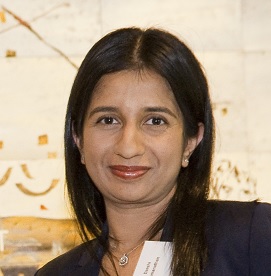
Project Summary:
Myelin is an electrically insulating material that forms a sheath around the axons of neurons in the central nervous system, and increases the speed at which impulses are propagated. Diseases related to the damage of myelin are referred to as demyelinating disorders. Multiple sclerosis (MS) is the most prevalent demyelinating condition with recurrent attacks of inflammation of the central nervous system that can result in accumulated disability including blindness and paralysis over time1. However, it is increasingly recognised that there are patients with demyelination who have a different mechanism of action to MS. The identification of an antibody targeting the aquaporin-4 (AQP4) water channel in 2005, in a subgroup patients with demyelination, has been crucial for the distinction of these patients from those with MS2. The differentiation of patients with AQP4 antibodies and MS is essential as the treatment regimes and outcomes vary significantly between the two diagnoses. However, there remain many patients who are AQP4 antibody-negative3 and also do not fulfil diagnostic criteria for MS, suggestive of other causes which are yet to be identified. Antibodies to myelin oligodendrocyte glycoprotein (MOG), a protein found in myelin, have been described since 2007 in some children with demyelination, but until recently were not previously found in adults4.
In the last three years and as the subject of my PhD, our group has been instrumental in identifying a subgroup of adult patients with demyelination who have antibodies to MOG5. MOG antibodies are rapidly emerging as a novel diagnostic biomarker of inflammation of the optic nerve resulting in blindness (optic neuritis), and inflammation of the spinal cord resulting in paralysis (transverse myelitis). Our research team is currently the only group in Australasia that offers the gold standard diagnostic laboratory test (a cellbased assay analysed by flow cytometry) for detecting MOG antibodies in patient serum and provides a report to clinicians, and I am responsible for initiating and providing this service for adult patients nationally. Two of my first author publications were the first descriptions in the literature specifically highlighting the association of MOG antibodies in adults with simultaneous bilateral optic neuritis and detailing the clinical phenotype of these patients5,6, with subsequent studies by other groups confirming our findings7,8. Another one of my first-author publications9 was the first original report in the literature to directly compare the radiological characteristics of optic neuritis in patients with MOG antibodies, AQP4 antibodies, and MS, and identify features which would help clinicians make an earlier and more accurate diagnosis for their patients. My publications have therefore been among the first to identify MOG antibodyassociated demyelination as a truly separate entity to MS and AQP4 antibody-positive demyelination, with a unique clinical and radiological profile. Patients with MOG antibody-associated demyelination can have relapsing disease that can result in blindness and paralysis. There is currently no consensus in the literature on the best way to treat this newly identified group of patients. As outlined in this application, I intend to define the clinical course of these patients, identify the best and most effective treatment regimes to manage them, and ultimately improve their outcomes and minimise disability. Having trained in specialised laboratory techniques during my PhD, I am equipped to design and conduct research exploring pathophysiologic mechanisms of antibody-associated disease. Having undergone my training in clinical neurology and with subspecialty clinical exposure, I have built my expertise in the diagnosis and management of these complex patients. I am therefore in a unique position to execute translational and clinically relevant research in the field of antibody-associated neurological diseases. My publications thus far have provided the first descriptions of the clinical and radiological phenotype of patients with MOG antibody-associated demyelination, and have already influenced clinical practice by assisting physicians to make an earlier diagnosis and promote rapid initiation of immunotherapy. My published research has therefore already improved health service delivery and outcomes for patients in Australia and internationally, and I believe this innovative proposed research project will significantly contribute to this goal.



 The Brain Foundation is the largest, independent funder of brain and spinal injury research in Australia. We believe research is the pathway to recovery.
The Brain Foundation is the largest, independent funder of brain and spinal injury research in Australia. We believe research is the pathway to recovery.